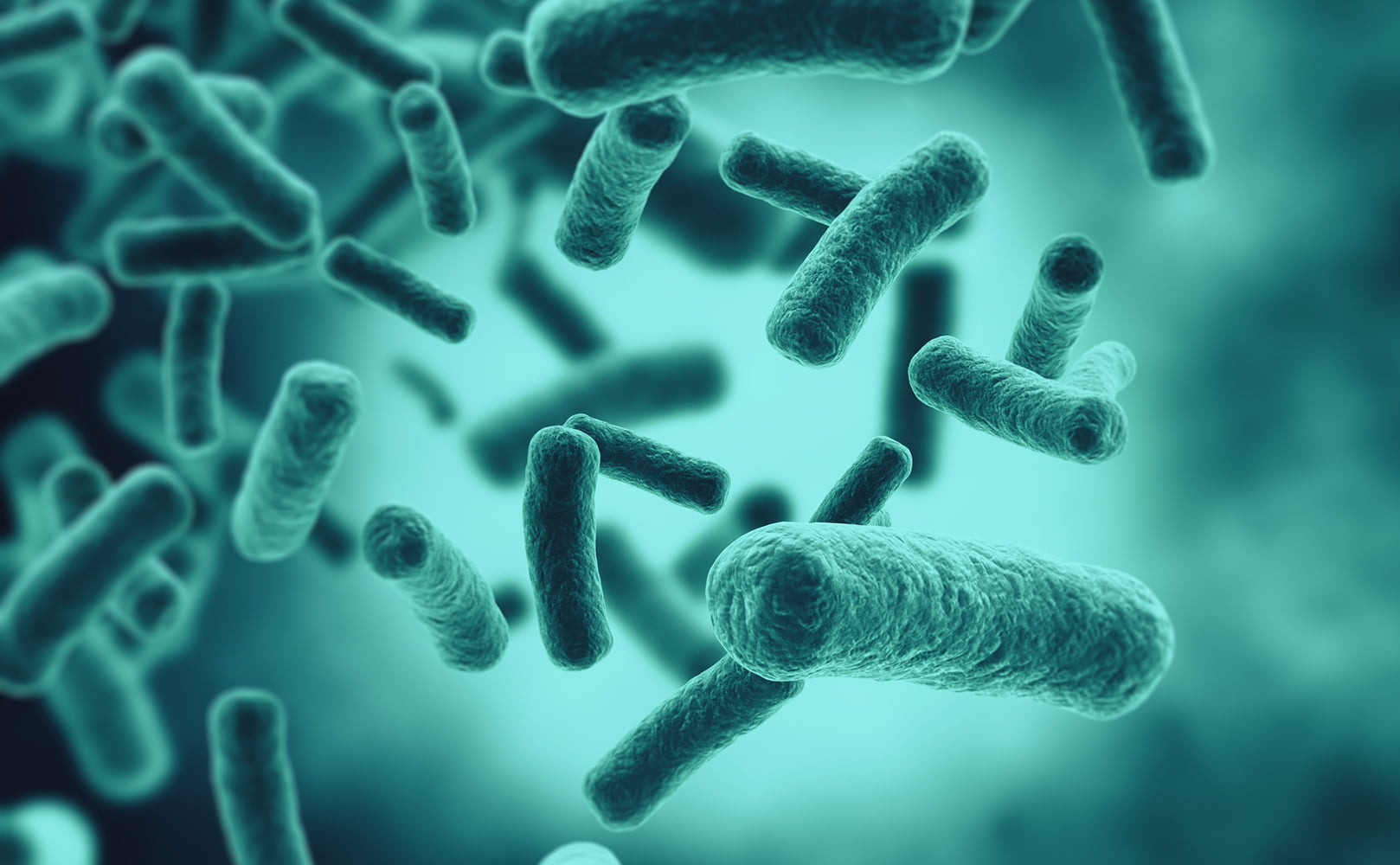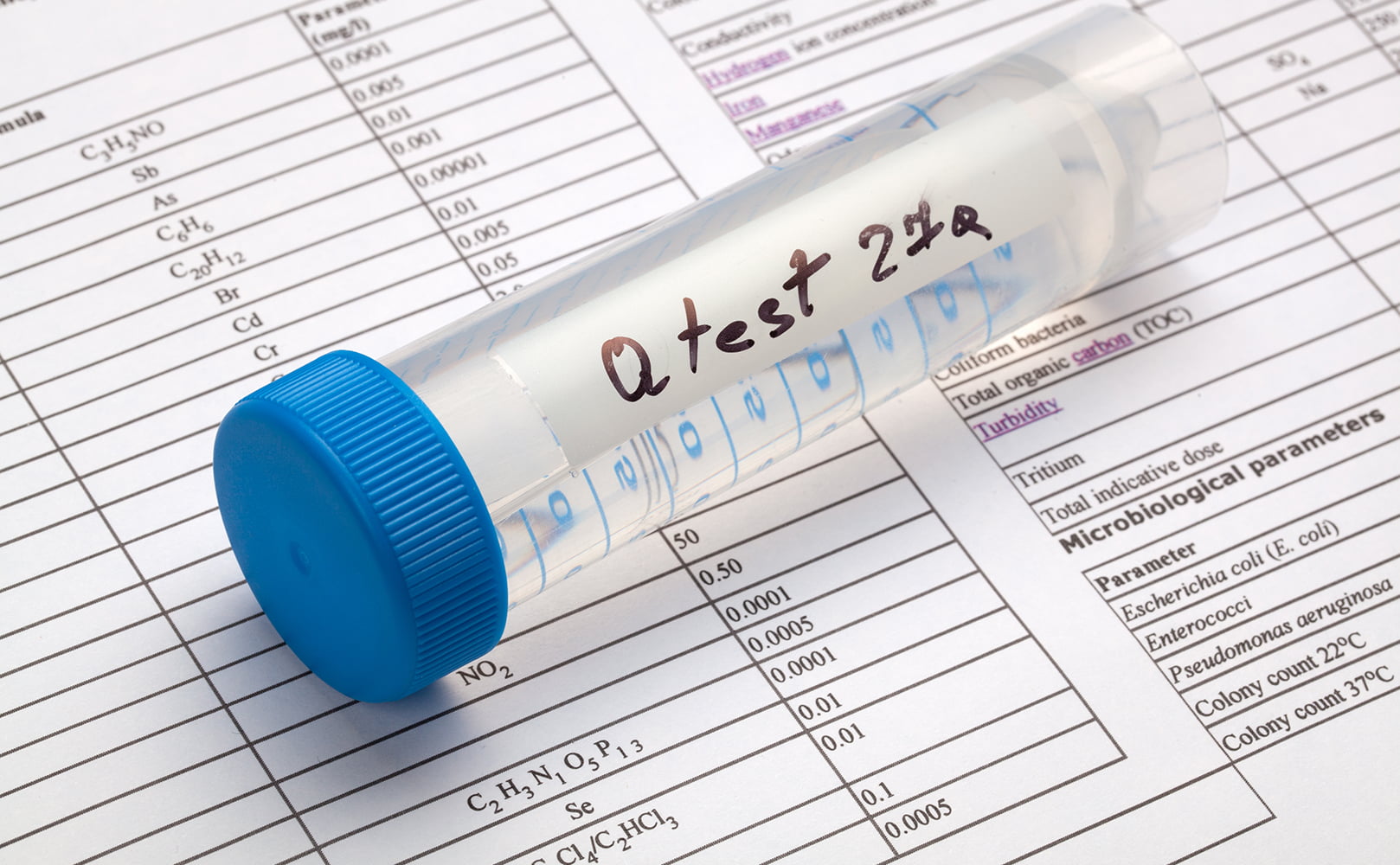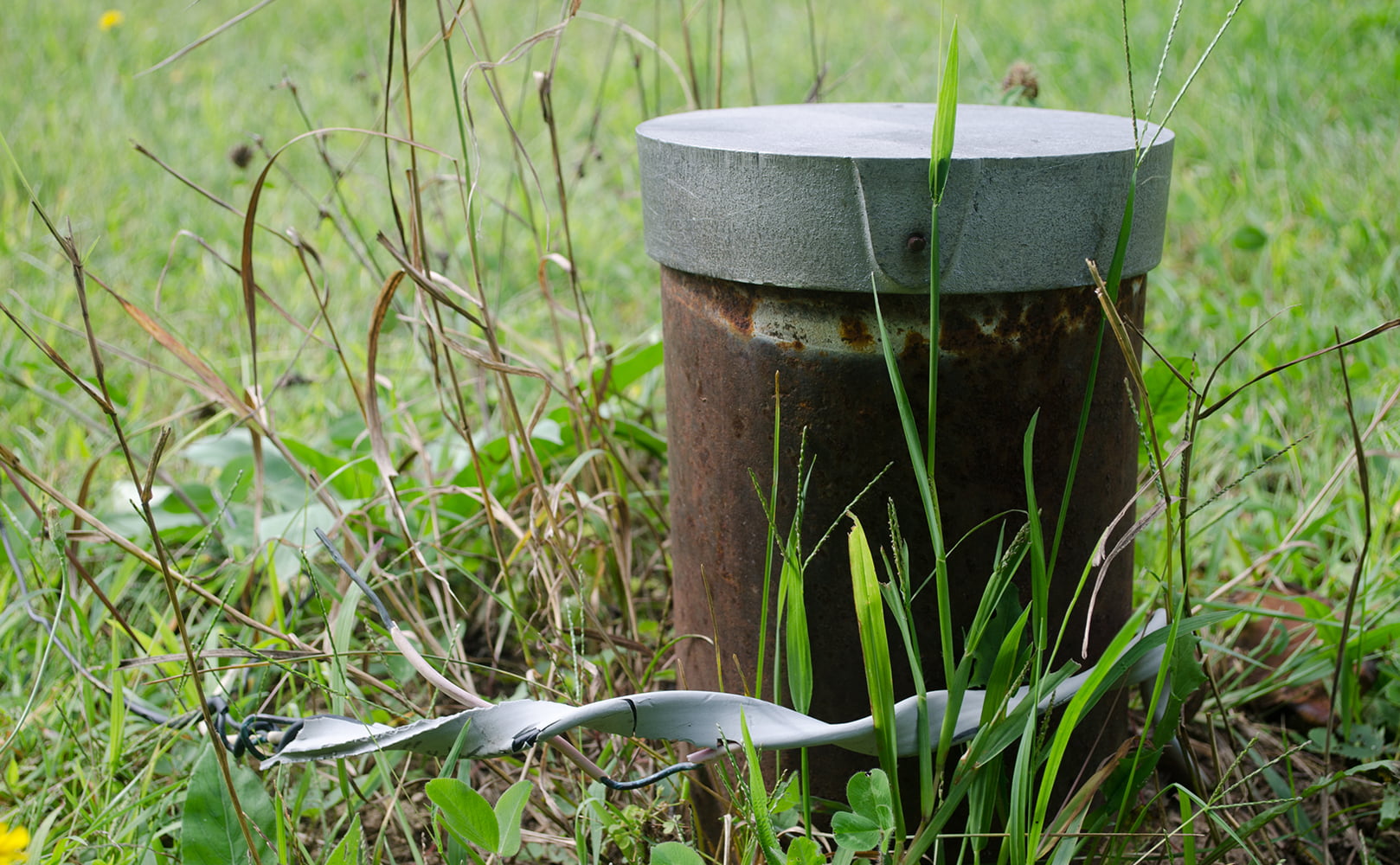Does Reverse Osmosis Remove E. Coli and Other Coliform Bacteria?
Written by: Alexandra Uta // Last Updated: Mar 30, 2023
This page may contain affiliate links. If you buy a product or service through such a link we earn a commission at no extra cost to you. Learn more.
Reverse osmosis is lauded as one of the most reliable ways to filter water at home – it excels at removing a wide spectrum of contaminants.
But just how far does reverse osmosis go? Does it remove E. coli and other coliform bacteria from water?
This article has all the answers.
Key Takeaways
- Reverse osmosis removes E. coli from water.
- Reverse osmosis removes all coliform bacteria from water.
- However, reverse osmosis does not kill these bacteria. You’ll need to combine a UV light with your RO system to kill bacteria.
Does Reverse Osmosis Remove E. Coli?
First of all, does reverse osmosis remove E. coli from water? Yes, reverse osmosis removes E. coli from water.
But, it’s not designed to handle it. Unlike inorganic contaminants, biological contaminants like E. coli bacteria can grow on the pre-filters and the membrane of a reverse osmosis system deteriorating them, and eventually begin to slip into the filtered water.
To prevent this unpleasant scenario, most RO systems are labeled to be used on “biologically-safe water” only.
The best way to remove E. coli from water is by using a UV water purifier, but more on that later.
Does Reverse Osmosis Remove Coliform Bacteria As a Whole?
How about coliform bacteria in general? Does reverse osmosis remove all coliform bacteria? Yes, reverse osmosis can remove all coliform bacteria from water.
But as we just mentioned, RO systems are not really designed to remove bacteria from water, so don’t get too comfortable.
How Effective Is RO Against Coliform Bacteria and How Does the Removal Process Work?
Reverse osmosis filtration is highly effective against coliform bacteria, removing 99.9% of them from water.
The removal process is quite straightforward too. Reverse osmosis works by forcing water under high pressure through a semipermeable membrane with very small pores. Water molecules are small enough to pass through this membrane easily, but larger contaminants like coliform bacteria are unable to pass through.
The bacteria are trapped on the membrane along with other contaminants and won’t pass on to the storage tank. Instead, the wastewater containing the contaminants goes through a separate tube and down the drain.
Note that this process doesn’t kill bacteria; it simply removes them from the water and stops them from mixing with the filtered water.
What Are E. Coli/Coliform Bacteria?
Coliform bacteria are a group of bacteria always present in human and animal gastrointestinal tracts (GIT). They are grouped into total coliform bacteria, fecal coliform, and E. coli. Think of coliform bacteria as a large umbrella term that covers other subgroups of bacteria. Fecal coliforms are found in fecal matter, and E. coli is a type of fecal coliform.
Having E. coli in water means that some fecal matter has found its way into your water supply.
How They Enter Your Water Supply
E. coli and other coliform bacteria can enter your water supply through different means.
If you use well water, contaminated surface water can seep into your well, polluting your water with E. coli. This usually happens after a serious storm, where runoff and animal waste flow straight into the well. Also, the shallower your well is, the more vulnerable it is to surface water contamination. Wells less than 30 feet deep are more likely to get contaminated this way.
Tap water isn’t immune to E. coli either. E. coli can easily get into tap water if sewage comes in contact with the already treated or filtered tap water. This can happen in the cases of a sewage overflow or line break, where the sewage water slips into different water lines, contaminating them.
Health Effects
Having bacteria in your water is never pleasant. Here are some health effects of consuming E. coli or coliform-contaminated water:
- Diarrhea (may be bloody)
- Stomach pain
- Fever
- Nausea
- Vomiting
- Fatigue and weakness
- Dehydration
- Muscle ache
In severe cases, E. coli can lead to more serious health effects. These include:
- Kidney failure
- Anemia
- Stroke
- Nervous system injury
Children, older adults, and immunocompromised people have the highest chances of developing severe complications from E. coli infections.
Safe Levels?
The WHO states that there really is no acceptable level of E. coli in water, unless it’s zero. This means that not even a tiny amount of E. coli in water is deemed safe or acceptable. The best E. coli count is the one that is undetectable.
Testing
To test your water for E. coli and other coliform bacteria, take a sample of your water to an EPA-certified lab or use a home water testing kit designed to detect E. coli.
The best time to test for E. coli is late spring or early summer because coliform bacteria are more abundant in wet weather. If you’re using a test kit, pour your water into the test vials provided and wait to observe the color change. If the water turns yellow, your water is E. coli-free. However, if it turns purple, then E. coli or other coliform bacteria are present in your water. The test kits typically come with a color chart to help you interpret the results.
Other Contaminants RO Systems Remove
Besides E. coli and coliform bacteria, reverse osmosis systems remove an impressive range of contaminants. Here is a list!
Heavy Metals, VOCs, Water Disinfectants + Byproducts, Pesticides, Salts, Sediment, Overall TDS
RO systems remove:
- Heavy metals like mercury, lead, and cadmium
- Transition metals like nickel, chromium, and iron
- Volatile organic compounds (VOCs) like benzene, ethylene glycol, and formaldehyde
- Protozoans and cysts
- Viruses
- Water disinfectants like chlorine and chloramine
- Pesticides and herbicides
- Sediment and silt
- Minerals and salts (magnesium, potassium, calcium, sodium, fluoride, etc.)
- Disinfection byproducts
- Nitrates/Nitrite
- Total dissolved solids (TDS)
Other Types of Bacteria That Reverse Osmosis Removes
Other types of bacteria that a reverse osmosis system can remove include:
Salmonella
Reverse osmosis efficiently removes salmonella from water. Salmonella are present in food and water that has been contaminated with infected fecal matter. People with salmonella infections experience diarrhea, fever, and uncomfortable stomach cramps. Children, infants, and older adults are at greater risk of severe Salmonella infection.
Shigella
Shigella are another bacteria that RO systems remove. They’re primarily found in the GIT and cause an infection called shigellosis. Symptoms include prolonged diarrhea, dehydration, fever, and stomach pain. There’s also a chance that the infected person may experience reactive arthritis, which leads to joint pain, painful urination, and eye irritation.
Campylobacter
If left unfiltered, Campylobacter can cause nausea, vomiting, bloody diarrhea, fever, and stomach pain. Even more serious complications can also arise from this bacteria, including IBS (irritable bowel syndrome), arthritis, and temporary paralysis.
This infection can be life-threatening for people who are immunocompromised (for example, people receiving chemo, people with AIDS, or people with blood disorders).
Vibrio cholerae
These deadly bacteria are responsible for cholera, a serious illness that can cause life-threatening diarrhea. Cholera can be mild without symptoms, but its symptoms can be very uncomfortable. They include severe watery diarrhea, thirst, vomiting, leg cramps, and restlessness.
Vibrio cholerae could also cause serious dehydration due to fluid loss resulting in kidney failure if left unchecked. Reverse osmosis can help filter out this bacteria.
Legionella
These bacteria cause a severe type of lung infection called Legionnaires’ disease. It also causes a less severe illness known as Pontiac fever. Symptoms of Legionnaires’ disease include fever, cough, trouble breathing, headaches, and muscle aches. Symptoms of Pontiac fever include fever and muscle aches.
What Is Not Removed?
A reverse osmosis membrane removes contaminants that are too big to pass through its super tiny pores. Unfortunately, some contaminants do manage to get past an RO membrane. Here are some of them:
- Pesticides like atrazine
- Organic compounds like benzene
- Dissolved gasses like chlorine, carbon dioxide, and radon (this is because the gasses are too light and are not ionized)
Installing pre-filters to your RO system can do wonders and greatly improve your filtration results. Pre-filters assist the system by eliminating some base contaminants before passing the water on to the main RO membrane.
Some Other Ways to Remove E. Coli and Coliform Bacteria from Water
UV Disinfection
UV disinfection is specifically designed to kill microorganisms in water. These microorganisms include bacteria, viruses, and protozoans.
UV water disinfection uses ultraviolet light, and it destroys bacteria by disrupting their DNA, making it impossible for them to grow and multiply.
Keep in mind, UV disinfection should only be carried out on clear or already filtered water. Otherwise bacteria shield themselves from UV rays by hiding behind sediments and other floating impurities. Therefore, the murkier your water is, the less effective UV purification becomes.
Tip: Periodically test your water for E. coli after filtering to see if your UV purifier is working effectively.
Water Distillation
Distillation is another way to remove coliform bacteria from water. The water distiller boils water until it evaporates, and then the steam cools and condenses into purified liquid. The heat from distillation is enough to kill any bacteria.
Distillation is a thorough treatment technique overall. It’ll target any organic and inorganic water impurity.
Chlorination
Chlorination is another way to remove E. coli + coliform bacteria from water. Chlorine kills bacteria by attacking their cell membrane. With the cell membrane down, chlorine seeps into the cell and halts cellular respiration and DNA activity, effectively killing the organism.
What to Consider When Buying a Reverse Osmosis System
Consider these factors before getting a reverse osmosis system:
Water Source Quality
Before buying a reverse osmosis system, consider the current state of your water source.
For example, if your water source supplies hard water, you’ll need to take some precautionary measures with your RO system. Hard water causes the RO membrane to age prematurely, which affects its lifespan. To counter this, use a pre-treatment water softener alongside your reverse osmosis system. This move protects your RO system from breaking down and gives you a better filtration experience.
NSF Certification
NSF certifications tell you what contaminants your RO system can remove. It also lets you know how efficient the unit is and if it was made from safe materials.
Always check the NSF certification of the reverse osmosis system you intend to buy to ensure it can remove all the contaminants present in your water.
How Much Water You Need
Consider your water demand before buying any filtration system. For instance, if you have a large household with higher than average water consumption, you’ll have to choose an RO system that produces enough water to meet your needs. Typical under sink RO systems produce around 30 gallons of drinking water daily.
If you’re using a whole house reverse osmosis system, you should get one with a tank size that will be enough to cater to your household demand.
Water Pressure
Another thing to consider before buying a reverse osmosis water system is the feed water pressure. Most RO systems work best at 60 psi. If your pressure drops below 40 psi, your system will stop functioning. Thankfully, you can fix low pressure by installing a pump.
Budget
RO systems cost from as little as a few hundred dollars to thousands of dollars. Your choice of RO systems should depend on what you can reasonably afford. If you’re on a tight budget, you can choose an under sink or countertop model. It’s less expensive than whole house RO systems which cost thousands of dollars.
Remineralization
During reverse osmosis filtration, minerals are filtered out of the water alongside contaminants. Losing minerals in your water doesn’t affect your health because your diet supplements your minerals anyway.
However, some people complain about the taste of RO water and prefer mineralized water. If you’re worried about the taste of RO water, you can include a remineralizer filter in your setup. These filters add healthy minerals into the RO water to improve its taste.
Installation and Maintenance
After buying your reverse osmosis filter system, you’d need to install and maintain it. So, you must factor in your preferred system’s installation and maintenance costs before making a final buying decision.
Some systems can be installed without professional help. For instance, with under sink RO systems, you only need basic installation tools and a little DIY knowledge. The manufacturer’s instructions come with the installation steps, so you’ll know exactly what to do. If you’re uncomfortable installing the system, you’d need to pay a plumber to help you.
As for maintenance, you need to replace your sediment and carbon filters when due. Most filters are to be replaced every 6-12 months. You’ll also need to replace the reverse osmosis membrane, but they last 2-5 years, so you won’t have to replace them that often.
How about the water storage tank? You’ll need to clean it once every year to avoid bacteria and biofilm accumulation.
If you have any thoughts about the question, does reverse osmosis remove coliform bacteria, please don’t hesitate to leave a comment below!
Information provided on BOS is for educational purposes only. The products and services we review may not be right for your individual circumstances.
We adhere to strict editorial guidelines. Rest assured, the opinions expressed have not been provided, reviewed, or otherwise endorsed by our partners – they are unbiased, independent, and the author’s alone. We fact-check all content for accuracy. It is accurate as of the date posted and to the best of our knowledge.




